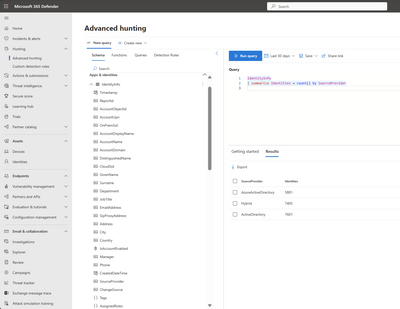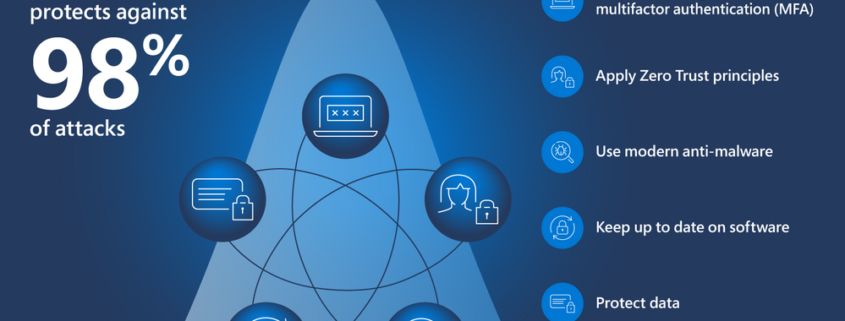Microsoft is proud to be recognized as a Leader in the Forrester Wave™: Zero Trust Platform Providers, Q3 2023 report. At Microsoft, we understand modernizing security is a complex task in this era of ever-evolving cyberthreats and complex digital environments. Serious threats have necessitated a paradigm shift in how organizations protect their digital estates. That’s why Microsoft embraces an end-to-end Zero Trust architecture: a comprehensive approach to security that helps our customers effectively mitigate business risk in the era of hybrid and remote work.
Microsoft’s leadership
Zero Trust has become the industry standard for securing complex, highly distributed digital estates. And Microsoft is in a unique position to help customers with their security needs, as Microsoft delivers end-to-end cross-cloud, cross-platform security solutions, which integrate more than 50 different categories across security, compliance, identity, device management, and privacy, informed by more than 65 trillion threat signals we see each day. Microsoft is actively engaged with the National Institute of Standards and Technology (NIST), most recently providing public commentary for the NIST National Cybersecurity Center of Excellence (NCCoE) and participating in The Open Group where we co-chaired the Zero Trust Architecture (ZTE) forum. As we look to the future, Microsoft recognizes that customers are entering the era of AI. And by combining the principles of Zero Trust with the capabilities of AI, organizations will have the potential to create a formidable defense against modern cyberthreats. In this blog, we will explore Forrester’s latest evaluation of the Microsoft end-to-end Zero Trust architecture and what the future will hold by leveraging the power of AI.
Forrester Wave™: Zero Trust Platforms report
See why Forrester recognizes Microsoft as a Leader in Zero Trust.

Comprehensive end-to-end protection
Its Copilot theme carries over to a notable vision to provide end-to-end, step-by-step guidance for implementing ZT while leveraging AI. This means customer can take their ZT journey with Microsoft in lockstep.Forrester Wave™: Zero Trust Platforms, Q3 2023 report
We are proud that the Microsoft Zero Trust platform has been recognized as a Leader in the Forrester Wave™: Zero Trust Platforms, Q3 2023 report, which we believe demonstrates Microsoft’s strong track record for being a comprehensive end-to-end platform.

The Forrester Wave™ report evaluates Zero Trust platforms based on criteria that include network security, centralized management and usability, data security, device security, automation, orchestration, people, and identity security—along with both on-premises and cloud deployments. In the latest evaluation for Q3 2023, the Microsoft end-to-end Zero Trust architecture has demonstrated its excellence in these areas by being named a Leader in this inaugural Forrester Wave™ report evaluating Zero Trust Platform Providers. The Microsoft end-to-end Zero Trust model received the highest possible score in the following categories based on the Forrester analyst criteria: people and identity security, device security, enabling and protecting the hybrid workforce, data security, automation and orchestration, visibility, and analytics.
Zero Trust in the age of AI
In an era where AI is rapidly transforming how we work, its convergence with cybersecurity brings both immense opportunities and new challenges. Here’s why Zero Trust becomes even more crucial:
- Sophistication of threats: As cyberattacks have become more sophisticated and capable of evading traditional security measures, Zero Trust, with its emphasis on continuous verification, explicit verification, and least privileged access, offers a more effective defense against these advanced threats with or without AI capabilities.
- Data protection and privacy: AI relies on vast amounts of customers’ data to help the user be more productive, and safeguarding this data is paramount. Zero Trust’s data-centric approach ensures that access to sensitive data is highly controlled, mitigating the risk of unauthorized AI-driven breaches.
- Automated responses: AI-enabled security can provide rapid automated responses to threats. When integrated with Zero Trust, AI-driven responses become even more effective by improving alert fatigue, adapting access controls in real-time, minimizing damage, and containing potential breaches.
Looking to the future
Microsoft’s leadership in Zero Trust, as shown by the latest Forrester Wave™, highlights our commitment to continuously evolving cybersecurity to meet the security demands of the digital age. With AI becoming a cornerstone of modern threats and defenses, the Zero Trust principles of assume breach, least privileged access, and continual explicit verification are more crucial than ever. As organizations navigate the evolving landscape of cyberthreats, the synergy between Microsoft’s end-to-end Zero Trust strategy and the capability of AI provides a formidable defense mechanism that is both forward-looking and resilient.
For more information on this recognition, check out the full Forrester Wave™: Zero Trust Platforms, Q3 2023 report.
Learn more
To learn more about Microsoft Security solutions, visit our website. Bookmark the Security blog to keep up with our expert coverage on security matters. Also, follow us on LinkedIn (Microsoft Security) and Twitter (@MSFTSecurity) for the latest news and updates on cybersecurity.
The Forrester Wave™ is copyrighted by Forrester Research, Inc. Forrester and Forrester Wave™ are trademarks of Forrester Research, Inc. The Forrester Wave™ is a graphical representation of Forrester’s call on a market and is plotted using a detailed spreadsheet with exposed scores, weightings, and comments. Forrester does not endorse any vendor, product, or service depicted in the Forrester Wave™. Information is based on best available resources. Opinions reflect judgment at the time and are subject to change.







